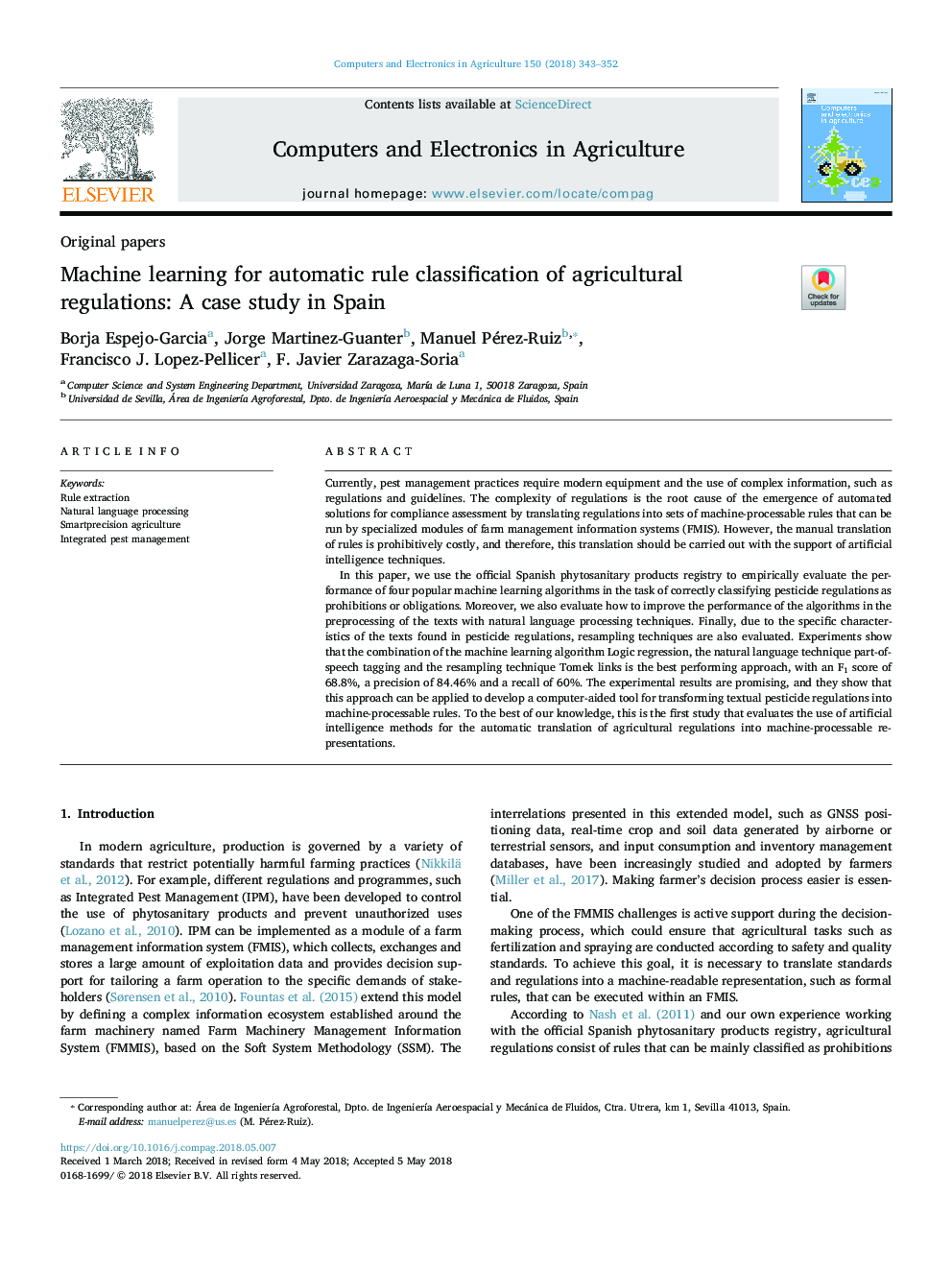| Article ID | Journal | Published Year | Pages | File Type |
|---|---|---|---|---|
| 6539403 | Computers and Electronics in Agriculture | 2018 | 10 Pages |
Abstract
In this paper, we use the official Spanish phytosanitary products registry to empirically evaluate the performance of four popular machine learning algorithms in the task of correctly classifying pesticide regulations as prohibitions or obligations. Moreover, we also evaluate how to improve the performance of the algorithms in the preprocessing of the texts with natural language processing techniques. Finally, due to the specific characteristics of the texts found in pesticide regulations, resampling techniques are also evaluated. Experiments show that the combination of the machine learning algorithm Logic regression, the natural language technique part-of-speech tagging and the resampling technique Tomek links is the best performing approach, with an F1 score of 68.8%, a precision of 84.46% and a recall of 60%. The experimental results are promising, and they show that this approach can be applied to develop a computer-aided tool for transforming textual pesticide regulations into machine-processable rules. To the best of our knowledge, this is the first study that evaluates the use of artificial intelligence methods for the automatic translation of agricultural regulations into machine-processable representations.
Related Topics
Physical Sciences and Engineering
Computer Science
Computer Science Applications
Authors
Borja Espejo-Garcia, Jorge Martinez-Guanter, Manuel Pérez-Ruiz, Francisco J. Lopez-Pellicer, F. Javier Zarazaga-Soria,
